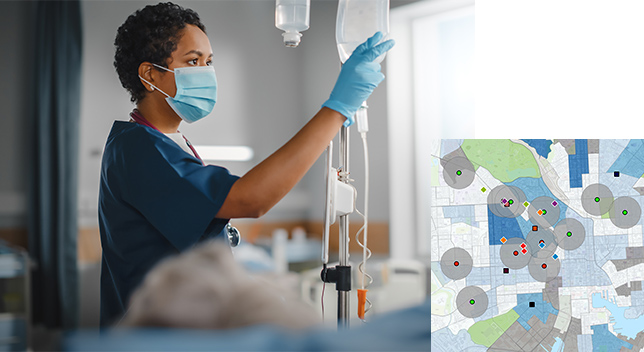ArcGIS Hub
Build information sites and engagement platforms to organize people, data, and tools around key community initiatives and increase citizen input.
EBOOK
Ongoing crises have revealed health inequities in communities across the United States. GIS technology helps pinpoint these disparities and provides organizations with actionable data to address them. In this ebook, you will learn how local governments leverage location intelligence to advance health equity in their jurisdictions.
